The Roots of Kabuki
- The Roots of Kabuki
- Kagura and The Kojiki
Kagura and The Kojiki
Ritual dances at shrines, performed by both priests and miko, are referred to as kagura. Kagura can also be performed by groups specifically created for that purpose, but they are often connected in some way to a local shrine. These groups can be found throughout Shimane, as there is a rich history and tradition behind kagura here.
Kagura is written with two characters that can be literally translated as “entertaining the gods”. The origins of kagura are recorded in The Kojiki, in the Ama-no-iwato myth. The various forms of kagura performed throughout the country are said to be based on this first performance.
Before Susano-o was driven out of Takamagahara for rebelling against Amaterasu, there came a point where Amaterasu was so afraid of his acting out that she went into hiding in a cave, rolled a stone in front of it and refused to come out. The heavens and the earth were plunged into darkness, and evil spirits went on a rampage.
The gods, fearing for the world, met and came up with a plan to draw Amaterasu out of her cave. They gathered together some holy birds and had them sing, and their song signals the coming of the sun. The evil spirits feared this and fled. Then the gods made a mirror, which reflects the soul of the beholder, and designed a necklace of magatama, comma-shaped stones that are said to have the power to bring out the sun. Then they uprooted a great sakaki tree with many branches and placed it in front of the cave. They placed the magatama necklace on the top branches, the mirror on the middle branches, and hung two strips of holy cloth, one white and one blue, on the lower branches. In this way, they made an offering to Amaterasu.
The goddess of performing arts, Amenouzume, stood in front of the cave, turned over a large wooden tub and stomped on it, going into a trance. As she danced in this state, her clothes loosened, and her breasts were bared. All the gods who were gathered there watching her dance howled with a laughter that reverberated through the heavens. Amaterasu heard this inside the cave, and wondering what was happening, cracked open the entrance to the cave and asked, “I’m in here, and the world outside of this cave, both the heavens and the earth, should be bathed in darkness. Why is it then that Amenouzume is dancing and all of the gods are laughing so loudly?” Amenouzume answered, “There’s a god out here who is even greater than you, so we are all happily enjoying ourselves.” While Amenouzume was answering, two other gods put the mirror that had been hung on the sakaki tree in front of her. Seeing her reflection, Amaterasu became intrigued and slowly started to make her way out of the cave.
Not wasting this opportunity, the powerful god Amenotajikarao, who had been hiding next to the cave waiting for the right moment, reached over, grabbed Amaterasu by the hand and pulled her out of the cave. Another god stretched a holy rope in front of the cave entrance and said, “Now you cannot go back in there.” In this way, the sun’s brightness shone once again across the heavens and the earth.
Amenouzume’s dance is a perfect example of “entertaining the gods”. It is this dance that is said to be the origin of kagura. To be fair, however, the different forms of kagura performed throughout Japan are much tamer than Amenouzume’s original dance.
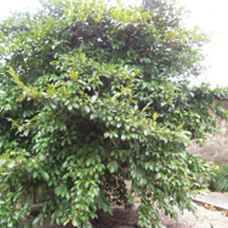
The sakaki tree is considered to be holy, and branches are used in Shinto ceremonies to this day.
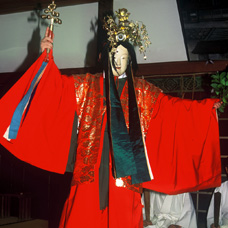
Sada Shin Noh, with its 400 years of history, is said to be the origin of Izumo kagura.
Visiting Locations connected to Kabuki
On the road from Izumo Taisha to Inasa-no-Hama beach, there are several places connected to Izumo-no-Okuni. Renga-an, the place where Izumo-no-Okuni lived out her days a nun after she returned to Izumo from Kyoto, is about a five-minute walk from Izumo Taisha. Across the street from Renga-an is a graveyard where Izumo-no-Okuni’s grave is located. Anyo-ji Temple, a temple with which Izumo-no-Okuni is said to have had a deep religious connection, has a set of prayer beads and a hand mirror that belonged to Izumo-no-Okuni. It is about ten minutes from Izumo Taisha by foot.
There are three major styles of kagura performed in Shimane: Iwami Kagura in western Shimane, Izumo Kagura in eastern Shimane, and Oki Kagura on the Oki Islands. Iwami Kagura in particular is quite popular, and performances of yokagura (all-night kagura) are held throughout the Iwami region every fall. Also, a type of ritual dancing performed at Sada Shrine in Matsue, Sada Shin Noh, is said to be the origin of the Izumo style of kagura. Sada Shin Noh was selected as an Intangible Cultural Property by UNESCO in 2011.
Also, there is a yearly festival held at Mononobe Shrine in Oda City that connects to the Ama-no-Iwato legend in The Kojiki. During the shrine’s Mitama-shizume-no-matsuri held every November 24th, Amenouzume’s dance is reenacted, although in a much more subdued, and fully-clothed, fashion.
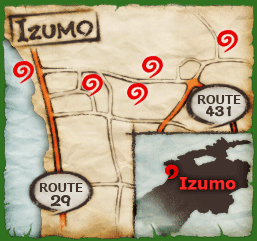
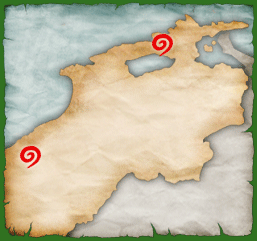
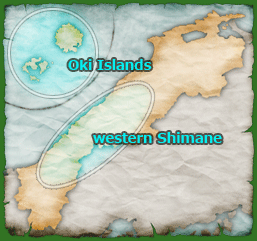
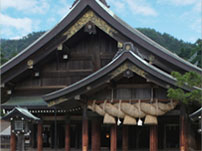
Izumo Taisha
195 Kizukihigashi, Taisha-cho, Izumo City, Shimane
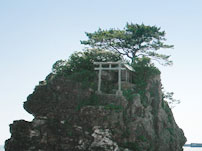
Inasa-no-Hama
Kizukikita, Taisha-cho, Izumo City, Shimane
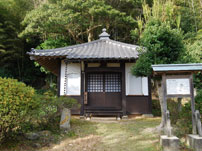
Renga-an
292 Kizukihigashi, Taisha-cho, Izumo City, Shiman
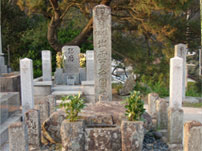
Izumo-no-Okuni’s grave
2529 Kizukikita, Taisha-cho, Izumo City, Shimane
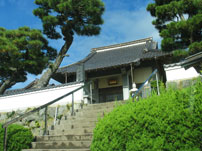
Anyo-ji Temple
2822 Karinomiya, Kizukikita, Taisha-cho, Izumo City, Shimane
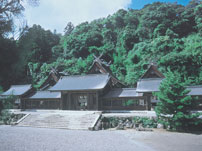
Sada Shrine
73 Sadamiyauchi, Kashima-cho, Matsue City, Shimane
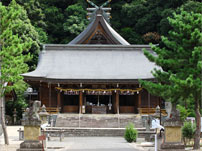
Mononobe Shrine
1545 Kawai, Kawai-cho, Oda City, Shimane













